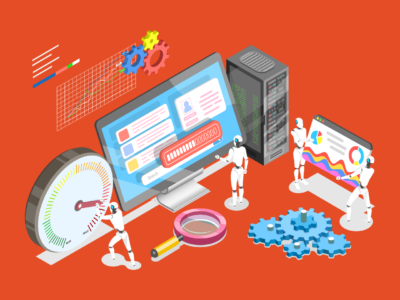Machine Learning (ML) has emerged as a transformative force across industries, revolutionizing the way we process data and make decisions. This guide will provide you with a practical and step-by-step approach to get started with machine learning, demystifying the complexities and empowering you to embark on your ML journey.
Understanding the Basics of Machine Learning
Before diving into the practical steps, let’s establish a foundational understanding of machine learning and its significance.
Essentials of Machine Learning
– Definition of Machine Learning:
Machine Learning is a subset of artificial intelligence that enables systems to learn and improve from experience without explicit programming.
– Types of Machine Learning:
ML is categorized into supervised learning, unsupervised learning, and reinforcement learning, each serving specific purposes in data analysis and decision-making.
– Applications Across Industries:
ML finds applications in diverse fields, from healthcare and finance to marketing and autonomous vehicles.
Practical Steps to Get Started with Machine Learning
1. Develop a Solid Understanding of the Fundamentals
– Learn Basic Concepts:
Familiarize yourself with key ML concepts such as algorithms, models, and datasets.
– Explore Different ML Libraries:
Get hands-on experience with popular ML libraries like TensorFlow and scikit-learn.
2. Acquire Proficiency in Python Programming
– Python for ML:
Python is the preferred language for ML. Learn Python fundamentals and libraries like NumPy and pandas.
– Explore Jupyter Notebooks:
Use Jupyter Notebooks for interactive and collaborative coding in ML projects.
3. Engage in Online Courses and Tutorials
– Online Platforms:
Enroll in courses on platforms like Coursera, edX, and Khan Academy for structured learning.
– Specialized ML Courses:
Opt for specialized ML courses that cover topics like regression, classification, and clustering.
4. Participate in Practical ML Projects
– Kaggle Competitions:
Join Kaggle, a platform for data science competitions, to apply your skills in real-world scenarios.
– GitHub Contributions:
Contribute to open-source ML projects on GitHub to collaborate with the ML community.
5. Build a Strong Theoretical Foundation
– Read ML Literature:
Explore foundational books and research papers to deepen your theoretical understanding.
– Stay Updated:
Subscribe to ML journals, blogs, and newsletters to stay informed about the latest advancements.
6. Experiment with Real Datasets
– Access Diverse Datasets:
Work with diverse datasets to understand how ML models perform in different scenarios.
– Data Preprocessing Skills:
Master data preprocessing techniques for cleaning and preparing datasets.
Conclusion: Embark on Your Machine Learning Journey
In conclusion, getting started with machine learning is an exciting and rewarding endeavor. By building a strong foundation in ML fundamentals, acquiring proficiency in Python, engaging in online courses and practical projects, and staying updated with the latest developments, you pave the way for a successful ML journey.
Remember, the key to mastery lies in a balance of theoretical knowledge and practical application. Embrace challenges, seek guidance from the ML community, and continually iterate on your projects. As you progress, you’ll unlock the potential of machine learning to solve complex problems and contribute to transformative advancements in technology.












Comments